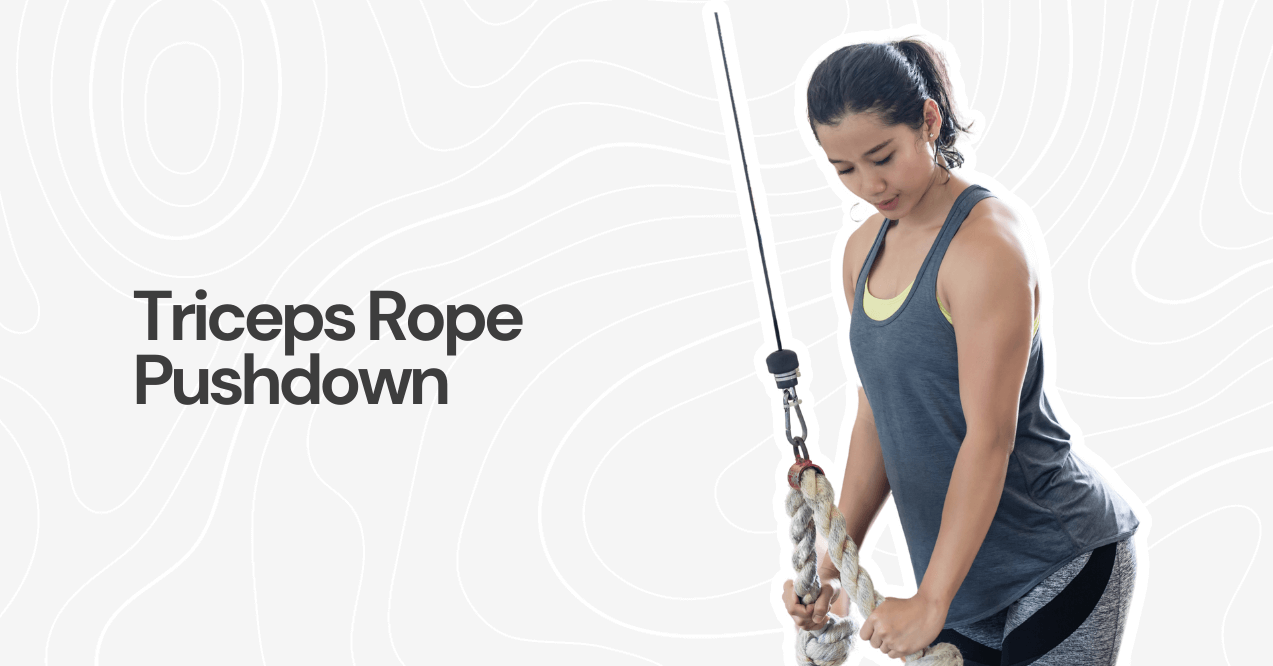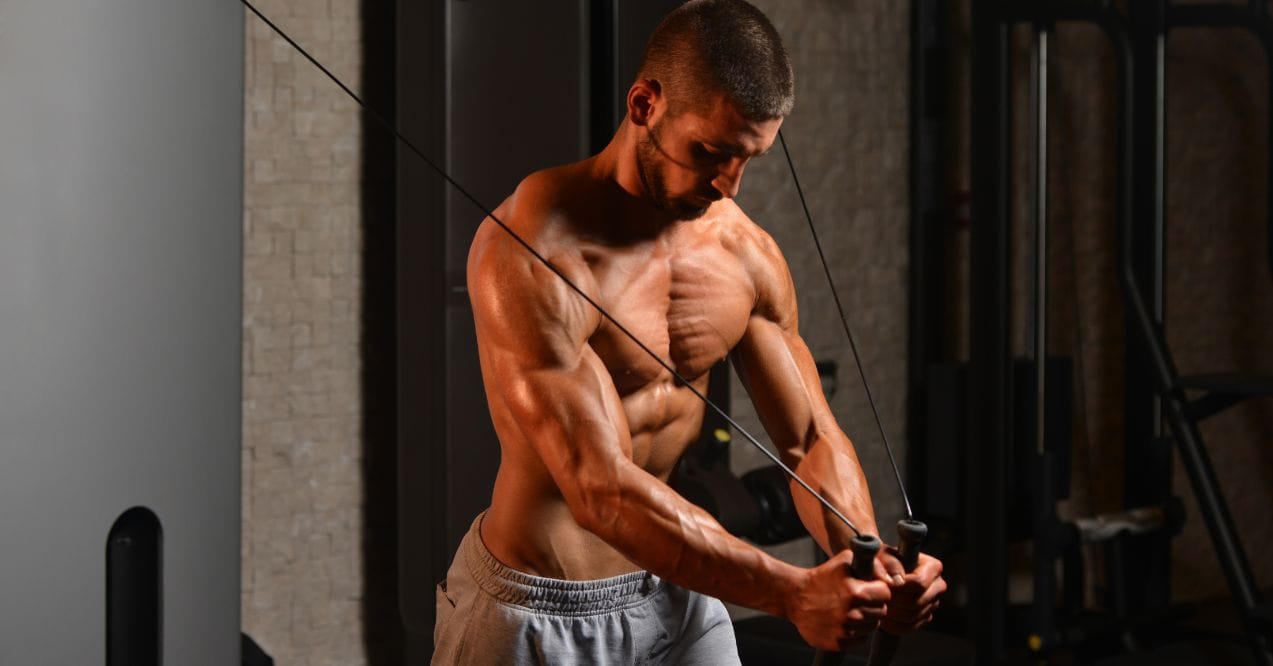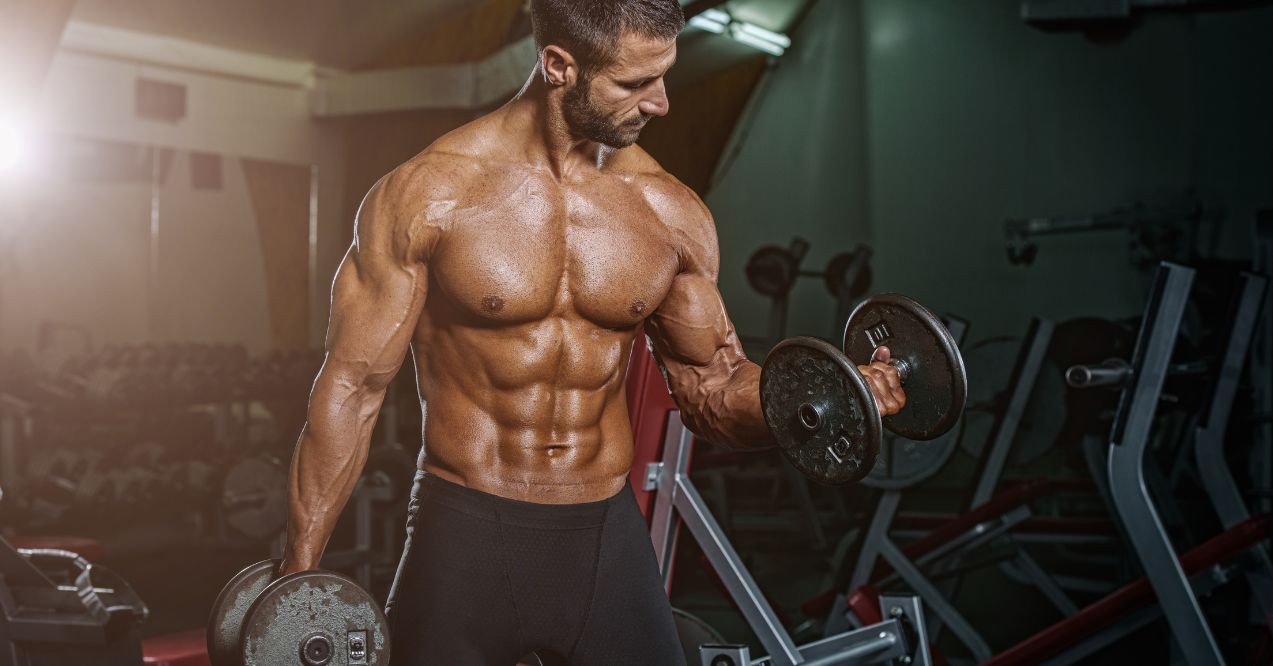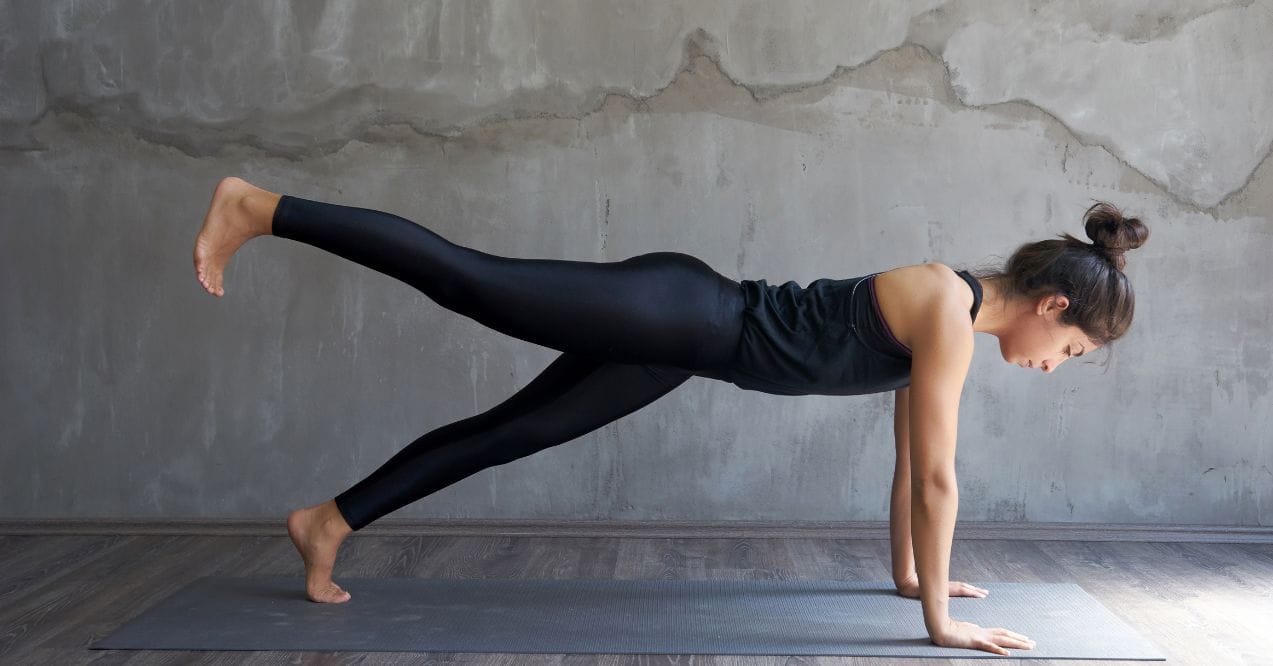Transform Your Upper Body With This Chest and Tricep Workout
A well-designed chest and tricep workout forms the foundation of upper body strength and muscle development. When you combine these muscle groups in your training routine, you create opportunities for both strength gains and aesthetic improvements.
This workout guide brings together the most effective exercises to help you build a stronger, more defined upper body even if you’re not taking performance supplements!
Key findings:

Chest and triceps muscles explained
Your chest consists of two main muscles. The pectoralis major creates the bulk of your chest, spanning across the upper body. This fan-shaped muscle powers your pushing movements and helps control your arm’s position. The pectoralis minor, though smaller, plays a vital role in stabilizing your shoulder blade.
The triceps, located on the back of your upper arm, consists of three distinct sections: the long head, lateral head, and medial head. These three parts work together to straighten your arm and assist in pushing movements. The long head also helps bring your arm down and back during certain exercises.
Why should you train your chest and triceps together?
Training chest and triceps together makes perfect sense from both a practical and scientific standpoint. These muscles naturally work as a team during pushing movements – when one activates, the other joins in to support the motion. For example, the bench press works triceps while targeting your chest muscles.
This natural partnership allows you to:
- Make efficient use of your gym time
- Maintain a balanced workout split
- Create more intense training sessions
- Develop coordinated strength between muscle groups
Some people also wonder, do resistance bands build muscle as effectively as free weights? While dumbbells are great for progressive overload, resistance bands can add extra time under tension, making them a useful tool for muscle endurance and control – a great addition to any chest and tricep or even back and tricep workout routine.
Chest and triceps workout
This comprehensive chest and tricep workout with dumbbells combines six science-backed exercises that target every area of your chest and triceps.
When starting a new routine, many people focus on strength and muscle growth but also wonder about body recomposition – the process of building muscle while losing fat. If that’s your goal, pairing the right training approach with proper nutrition is key.
Many also ask about post-workout nutrition and wonder: can you drink protein shakes without working out? While protein supports muscle recovery, the real benefits come from combining proper nutrition with effective training like the workout below.
We’ll start with compound movements that build raw strength, then move to isolation exercises for detailed muscle development. This approach maximizes your training efficiency by working multiple muscle groups simultaneously before focusing on specific areas. The carefully planned exercise sequence allows you to maintain intensity throughout your workout while managing fatigue.
1. Bench Press

Sets: 4 | Reps: 8-12 | Rest: 90 seconds
The bench press stands as the cornerstone of upper body training. Does bench press work triceps? Absolutely – it engages both your chest and triceps through a natural pushing motion that mimics many daily activities.
To perform the perfect bench press:
- Start by positioning yourself on the bench. Your eyes should align with the barbell when it’s racked.
- Plant your feet firmly on the ground, creating a stable tripod position with your feet and upper back.
- Grip the bar slightly wider than shoulder-width, ensuring your wrists align straight over your forearms.
- Before unracking, pull your shoulder blades together and down, creating a solid platform against the bench.
- Take a deep breath, brace your core, and unrack the weight with straight arms.
- Control the bar’s path as you lower it to your mid-chest over about 2 seconds.
- Press the bar back up in a slightly diagonal path toward your shoulders, maintaining full body tension throughout the movement.
Form tips for safer execution:
- Drive your feet into the floor to create a stable base
- Keep your shoulder blades pulled together and down
- Maintain a slight arch in your lower back
Watch out for these common mistakes that could hinder your progress:
- Bouncing the bar off your chest
- Lifting your hips off the bench
- Flaring your elbows past 45 degrees
2. Incline Dumbbell Press

Sets: 3 | Reps: 10-12 | Rest: 60-90 seconds
When looking to train triceps with dumbbells while targeting your upper chest, the incline press delivers exceptional results. This variation shifts emphasis to your upper chest fibers while maintaining significant triceps engagement.
- Begin by adjusting your bench to a 30-45 degree angle.
- Sit back fully against the bench and place the dumbbells on your thighs.
- Using your legs to help drive the movement, bring the dumbbells up one at a time to shoulder level.
- Rotate your wrists so your palms face forward, keeping your elbows bent and pointed toward the ground.
- Press both dumbbells up toward the ceiling in a slight arc, focusing on squeezing your chest at the top position.
- The dumbbells should nearly touch at the top without clanking together.
- Lower the weights with control, feeling a stretch in your chest as your upper arms become parallel to the ground.
- Maintain tension at the bottom position before pressing up again.
Essential technique points for better results:
- Keep dumbbells in line with your lower chest
- Control the weights independently
- Maintain upper back contact with the bench
3. Chest Fly

Sets: 3 | Reps: 12-15 | Rest: 60 seconds
A classic among chest and tricep exercises with dumbbells, the fly motion creates a unique stretch and contraction. This movement targets your chest from a different angle while keeping your triceps engaged for stabilization.
- Start by lying flat on the bench with dumbbells extended above your chest, palms facing each other.
- With a slight bend in your elbows, lower the weights out to the sides in a wide arc motion.
- Think about opening your arms like you’re hugging a large tree.
- Once you feel a comfortable stretch in your chest, squeeze your pecs to bring the weights back up to the starting position.
Key technique points for maximum benefits:
- Keep a slight bend in your elbows throughout
- Lower weights in a wide arc motion
- Focus on squeezing your chest at the top
4. Bar Dips

Sets: 3 | Reps: 8-12 | Rest: 90 seconds
Bar dips represent one of the most effective chest and tricep exercises for developing pushing strength. This bodyweight movement builds functional strength that transfers to everyday activities.
- Position yourself on parallel bars with locked arms.
- Lean slightly forward and lower your body by bending your elbows, keeping them close to your sides.
- Drop until your upper arms are parallel to the ground
- Then drive yourself back up to the starting position by pushing through your palms and squeezing your chest and triceps.
Essential form cues:
- Keep shoulders down and back
- Lean slightly forward for chest emphasis
- Control both descent and ascent
5. Dumbbell Skull Crushers

Sets: 3 | Reps: 12-15 | Rest: 60 seconds
This triceps exercise with dumbbells isolates each arm independently. While the name might sound intimidating, proper execution makes this an excellent movement for triceps development.
- Lie on a bench holding dumbbells over your chest with arms extended.
- Keeping your upper arms vertical and still, bend at the elbows to lower the weights toward your temples.
- Once you feel a good stretch in your triceps, extend your arms back to the starting position, focusing on squeezing your triceps at the top.
Critical form elements:
- Keep upper arms vertical throughout
- Lower weights alongside your head, not behind it
- Control the weight rather than letting gravity take over
6. Triceps Rope Pushdown

Sets: 3 | Reps: 15-20 | Rest: 60 seconds
The perfect finisher to train triceps with dumbbells and cables, this exercise delivers an intense pump while ensuring proper form through a fixed movement path.
- Stand facing the cable machine, gripping the rope attachment with palms facing each other.
- Keep your upper arms pinned to your sides and push the rope down until your arms are fully extended.
- As you reach the bottom, split your hands apart slightly to maximize triceps contraction.
- Control the weight as you return to the starting position.
Focus points for better results:
- Stand upright with slight forward lean
- Split the rope at bottom of movement
- Control the weight on return
By the end of this exercise, you’ll likely feel a deep, satisfying muscle pump in your triceps. Wondering how long does a muscle pump last? It typically ranges from 30 minutes to a few hours, depending on your training intensity, hydration, and nutrition—but it’s also a good indicator that you’re effectively targeting the muscle group.
How many times a week should you train your chest and triceps?
To optimize your chest and triceps exercises with dumbbells, aim for 2-3 sessions per week with at least 48 hours between workouts. This frequency balances muscle stimulation with adequate recovery time. Supporting your training with quality nutrition proves essential – many athletes incorporate supplements like Trumeta‘s Bone Broth Protein to complement their nutrition plan.

Just as athletes often ask about taking collagen and bone broth together for recovery, the key lies in finding the right balance. While some wonder how much collagen is in bone broth for muscle repair, the most crucial factor remains allowing adequate rest between training sessions.
For optimal results, consider your overall training approach. Recovery needs vary significantly between individuals based on training experience, lifestyle factors, and overall fitness goals. A beginner might thrive on two weekly sessions, while an advanced lifter could handle and benefit from three workouts targeting these muscle groups.
Your nutrition and sleep quality significantly impact recovery between sessions. Prioritize protein intake and ensure adequate caloric support for your training goals. Quality sleep helps optimize hormone levels and supports muscle repair, making it essential for progress.
Consider these key factors when planning your training schedule:
- Overall weekly training volume and intensity
- Sleep quality and stress levels
- Nutritional habits and hydration
- Other upper body training days
- Personal recovery patterns and energy levels
Conclusion
A well-structured chest and tricep workout builds both strength and muscle definition in your upper body. By combining these complementary muscle groups, you create efficient training sessions that deliver results. Start with the basic movements, focus on proper form, and progressively increase the challenge as you grow stronger.
Stay consistent with your training frequency and recovery time to see lasting improvements in your upper body development.
Yes, the bench press significantly engages your triceps as a secondary muscle group. During the pressing motion, your triceps work to extend your elbows, making them crucial supporters of the movement alongside your chest muscles.
Stop the exercise immediately and take a break. Focus on gentle mobility work and consider using lighter weights when you return. If pain persists beyond a few days, consult a qualified healthcare professional.
Yes, you can do moderate cardio after your chest and triceps workout. Keep the intensity manageable to avoid overtaxing your upper body. Focus on lower-body dominant cardio like cycling or walking.
Advertisement. This site offers health, wellness, fitness and nutritional information and is designed for educational purposes only. You should not rely on this information as a substitute for, nor does it replace, professional medical advice, diagnosis, or treatment. If you have any concerns or questions about your health, you should always consult with a physician or other health-care professional. Do not disregard, avoid or delay obtaining medical or health related advice from your health-care professional because of something you may have read on this site. The use of any information provided on this site is solely at your own risk.







